|
Tying Steps:
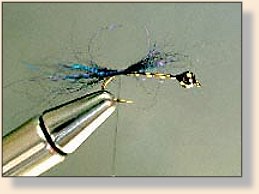
1. Secure bead behind the eye of the hook. Bring thread
back to the bend of the hook and tie in a pinch of
Arizona Simi Seal in the center of the clump.
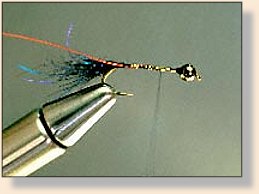
2. Fold forward facing clump backwards to
the rear and tie down. Tie in copper wire rib.
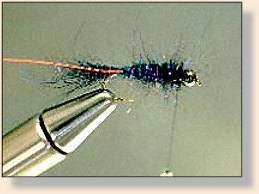
3. Dub Arizona Simi Seal body to desired taper
and tease out with Velcro.
Dubbing Method
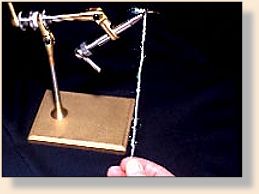
A. Dub Arizona Simi Seal evenly along thread. No wax
is added. Material doesn't necessarily even have to be
tightly dubbed on thread. Make sure Arizona Simi Seal is
dubbed along the entire length of thread from the hook shank
to the tip of the bobbin.
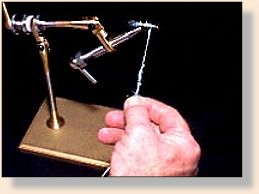
B. Hold the tip of the bobbin, the thread and the material firmly
by the first finger and thumb. Begin wrapping body of desired
shape. Do not loosen your grip on the bobbin tip. Each successive
wrap will tighten the material around the thread.
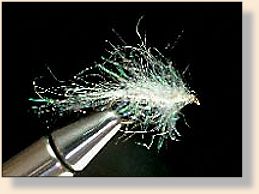
C. After you have achieved the desired body shape, tie off
and tease with Velcro or leave as is. This method will work
with any coarse, hard to dub material like seal or mohair
without the need for gummy waxes or dubbing loops.
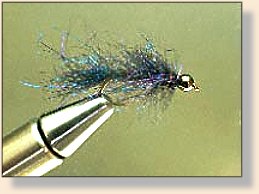
4. Wrap wire rib (copper shown) behind the bead,
tie off and trim excess wire. Retease with Velcro . . .
finished fly.
Fishing Suggestions:
By changing the size and color of the pattern, leeches can also represent
small baitfish, crawfish, dragonfly and even damsel nymphs. It is one
of the most versatile flies we have can have in our boxes and every angler
should have an ample supply in various sizes and colors. Tie them with
some weight in the front of the fly to sink them to the depths desired and
give the undulating motion of the leech. Beads and coneheads do the trick
as well and many tyers prefer these for ease of tying. I tie an assortment
unweighted to work over the weedbeds early morning and late evening.
A late evening leech pattern in a dark color has proven deadly for me just
about everywhere I have tried it. Adding rubberlegs is effective especially
on browns and smallmouth bass.
~ John Rohmer, Arizona Flyfishing
For more great flies, check out:
Beginning Fly Tying and
Intermediate Fly Tying.
|









